(Bloomberg) -- Torsten Müller-Ötvös, chief executive officer of Rolls-Royce Motor Cars Ltd., will retire on Nov. 30 after almost 14 years running the brand renowned for stately, expensive cars. His departure comes in line with BMW Group policies governing the retirement age of top-level executives, a spokesperson says. Chris Brownridge, the CEO of BMW UK, will succeed him on Dec. 1.
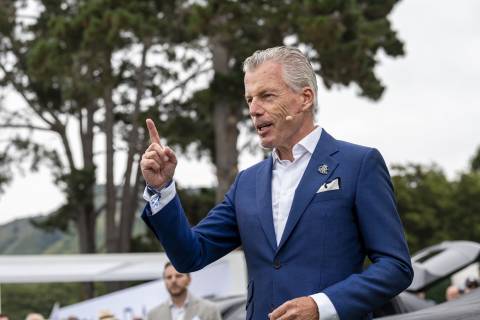
“It took me two years to understand that this is not a car business,” Müller-Ötvös said during a wide-ranging interview on Oct. 3. “The motivation for clients is not ‘I need a car to move from A to B.’ We call it the badge of me: ‘How can I generate something that carries my personal signature? Because, as a client, I’m not buying luxury off the shelf any longer.’”
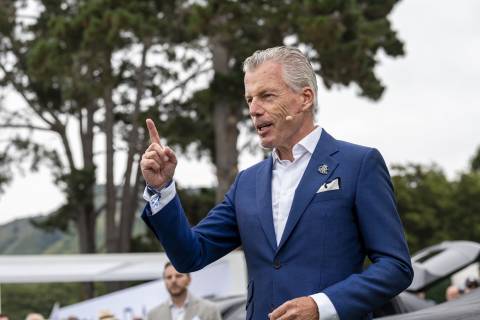
The debonair German, 63, rejuvenated the company that Charles Rolls and Henry Royce founded in 1906, growing sales by more than 500% since he joined in 2010. He implemented lucrative customization programs, introduced the brand’s first SUV and electric vehicle, and reduced the average age of the Rolls-Royce owner from the late 50s to 43—the youngest average customer age of any BMW Group brand.
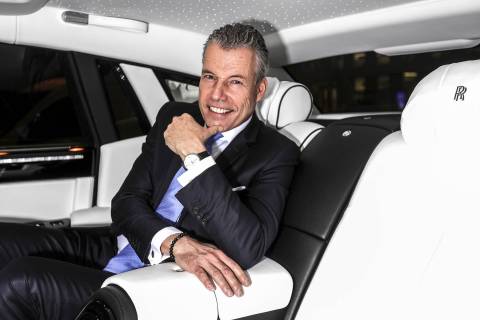
“Torsten’s outstanding leadership, unswerving commitment, clear vision and exceptional ability to build a strong, focused team have helped make Rolls-Royce the world-class luxury brand it is today,” BMW CEO Oliver Zipse said in a statement. “Rolls-Royce Motor Cars is a jewel in the crown of our organization.”
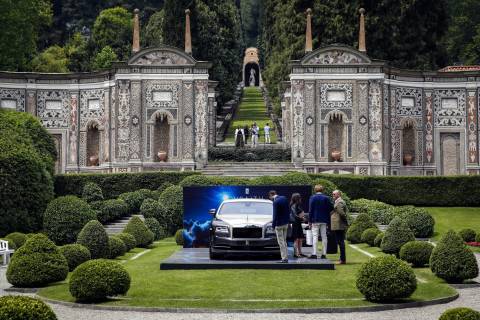
Last year, Rolls-Royce delivered 6,021 vehicles globally with an average price of around $525,000. By contrast, the average Rolls-Royce vehicle in 2010 cost around $262,000. The company delivered 2,711 of them that year, when 80% of the company’s customers were chauffeur-driven, Müller-Ötvös says.
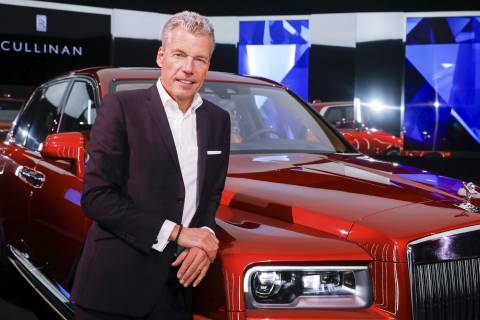
“It was a little bit old, a little bit seen on a pedestal, not openly approachable,” Müller-Ötvös says of the brand when he started. “It was clear that Rolls-Royce Motor Cars needed to be far more than [just] an automotive luxury brand.”
Known for his Savile Row suits, well-coiffed hair and charming demeanor, Müller-Ötvös held the top spot at Rolls-Royce longer than any other person since Claude Johnson, who introduced Rolls to Royce in 1904. Müller-Ötvös is an outlier among his peers at BMW Group, which typically shuffles high-ranking executives every few years. His predecessor, Tom Purves, held the CEO position for two years; Ian Robertson, who preceded him, held it for three.
“For me, it was never a question of whether I should move somewhere else,” he says. “I love the brand, I love the position. For me, it was heaven in a way.”
Dusting Off an Old Brand
Müller-Ötvös’s exit comes as the English automaker navigates a new age of EVs and autonomous driving. The company has announced that it will sell its last combustion-engine vehicle by the end of 2030. An all-electric coupe, the $420,000 Spectre, debuted earlier this year. Client deliveries will begin in November.
“My personal conviction was that electric is great for the brand,” he says, reiterating the company’s commitment to electric power despite news that the UK government has postponed a ban on sales of internal combustion vehicles. “We tested with it and experimented with it [for years]. This is Rolls-Royce 2.0.”
Michael Dean, the global head of automotive research at Bloomberg Intelligence, credits Müller-Ötvös with shaking off a sleepy company culture that had pervaded Rolls-Royce. “He was bold enough to be the first luxury brand to target being fully electric by 2030, with the likes of Bentley and Maserati following his lead,” Dean says.
Müller-Ötvös joined BMW Group in 1989, advancing to vice president of brand strategy and marketing before becoming the director of Mini in 2000. In 2004, he assumed responsibility for BMW Group marketing and brand management; four years later, he was running BMW’s global product management, where he stayed until taking the helm at Rolls-Royce.
Once there, Müller-Ötvös found a company preoccupied with status and ego, closed off to a youth culture that was rapidly embracing personalization, technology and accessible cool rather than elitism, he says. He spent months talking with financiers, clients and market forecasters, who told him that the world’s richest would become younger, more female and more casual than in previous generations.
“I met with a lot of brilliant people in the company and started to talk to private banks worldwide to better understand ultra-high net worth individuals because they are the target group for Rolls-Royce Motor Cars, and I must admit I was a new kid on the block in that segment,” he says. “I learned that the desire of clients had changed. They wanted to be invited into what we call the house of luxury. It’s more than just offering product. You need to offer service. You need to offer experiences that are very much luxury.”
He began widening the company’s business, laying plans to expand its lineup and revitalize its image in order to connect with a younger audience. “We needed to do something that was not about bragging ‘I own a Rolls-Royce’ but more of a statement of how cool it is to be seen in a Rolls-Royce,” he says.
By 2011, Müller-Ötvös was reporting record sales, delivering 3,538 cars (up 31% from the previous year) and saying the brand would soon include new models in addition to the familiar Ghost and Phantom.
In 2013, Rolls-Royce debuted the sporty, two-door Wraith. In 2015, it announced the Dawn convertible. The $355,000 Cullinan, the company’s first SUV, arrived in 2018.
Critics winced at the burgeoning model portfolio and production volumes of a brand that had based its reputation on exclusivity, but Müller-Ötvös remained adamant that under his plan, growth would remain healthy, even invigorating. “The introduction of the Cullinan was a turning point for the brand,” Dean says.
Today the behemoth rig with the V12 engine and the company’s first all-wheel drive contributes about 45% of Rolls-Royce’s total sales volume.
The Hermès of BMW Group
Buoyed by expanding sales and younger buyers, Müller-Ötvös deepened the company’s customization programs. In 2016, he introduced Black Badge, an optional trim package that cloaks the car’s signature Spirit of Ecstasy hood ornament and vertical grille, among other components, in black.
Today, Black Badge enjoys a nearly 40% take rate for any given model, fat double-digit margins and imitators at other luxury brands. The dark design cues and brooding image was among the biggest risks of his career, Müller-Ötvös says. When he launched it, he says, a 15% take rate would have been considered success.
“There were moments where we thought, ‘Are we damaging the brand here in a substantial way? Are we spooking existing clients?’” he says. “It was not an easy decision. But risk-taking is part of the business in that role. Decisions can't be calculated by computers, they need to be taken by individuals.”
Read More: Rolls-Royce Announces Client Design Program
He also oversaw the development of the company’s modern Coachbuild program, which allows the wealthiest, most loyal customers the chance to design a car from scratch. He tested the waters in 2017 with the $13 million Sweptail; next came 2021’s Boat Tail, an open-air four-seater meant to evoke a J Class yacht worth an estimated $28 million. Earlier this year, the Droptail arrived with a price tag exceeding $30 million—and a one-off timepiece by Audemars Piguet integrated into the dashboard.
By 2019 the number of heavily customized Rolls-Royces had jumped from 80% to 90% across the company; it hit nearly 100% for Phantoms. Custom additions add 40% or more to the average vehicle price. The evolution has helped boost profit margins, from the low 20% range in 2009 to an estimated 35% to 40% today. Rolls-Royce is the most profitable brand in the BMW Group.
“The ethos of Rolls-Royce within the BMW Group is that the target is profit, not volume,” Müller-Ötvös says. “You would never know how many handbags Hermès sold; they are steered by profit. That’s the way you should steer a luxury brand, and that’s the exactly the way the BMW Group sees us.”
He leaves the company with plans for additional growth, though not via new models. The 6,000 or so vehicles Rolls-Royce delivered worldwide last year will remain standard, he says: “We are not lowering prices or entering into lower pricing segments with different new models. There is no appetite at all to go for substantially more volume.”
In January, Rolls-Royce announced it had acquired land near its existing factory in Goodwood, England, primarily to increase its bespoke capacity and capabilities. The company declined to comment on the amount of land obtained and its value.
“The advice I give to my successor is similar to the advice I gave myself in the beginning: Be humble and listen to all the great experts here on the ground,” Müller-Ötvös says. “Try to understand the brand, try to understand your clients, talk to them as often as you can. Build an intricate understanding of which details are relevant for them. Build an intricate understanding of luxury. And listen, listen, listen, listen first, before you make quick decisions.”
An avid fly-fisherman, Müller-Ötvös says he will spend his time after November in various consulting and advisory roles.
More stories like this are available on bloomberg.com
©2023 Bloomberg L.P.
Author: Hannah Elliott
